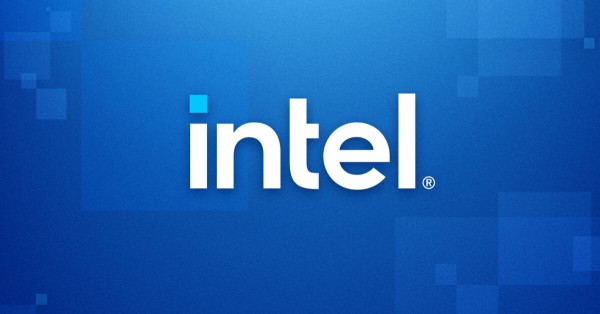AT&T is off to a strong start in 2025, reporting first-quarter earnings in line with Wall Street expectations and revenue slightly above forecasts. The telecom giant saw growth in both its core wireless business and its fixed wireless access (FWA) segment, helping push its stock up over 4% in early trading.
Below is a breakdown of AT&T’s Q1 performance and its continued pivot back to core telecom services.
AT&T Q1 2025 Financials Align with Analyst Forecasts
AT&T reported adjusted earnings of $0.51 per share, up 6% year-over-year. Total revenue came in at $30.6 billion, a 1.5% increase from the same quarter last year. Both figures aligned closely with analysts’ estimates, with FactSet projecting $0.51 EPS on $30.4 billion in revenue.
AT&T Adds 324K Wireless Subscribers, Outpaces Verizon
The company’s wireless unit was a standout performer. AT&T added 324,000 postpaid phone subscribers, comfortably beating expectations of 255,000. Though slightly down from the 349,000 added in Q1 2024, the results contrast sharply with Verizon, which lost 289,000 subscribers in the same period.
This performance continues to support AT&T’s positioning as a value-driven competitor in the U.S. wireless market, focusing on customer retention and high-value bundles.
AT&T Q1 2025 Earnings Push Stock Up 4.3%
AT&T stock rose 4.3% to $28.12 following the report, adding to its 19% gain so far in 2025. The stock recently regained its 50-day moving average, signaling renewed investor confidence.
By comparison, Verizon shares saw minimal movement, while T-Mobile also inched higher ahead of its earnings announcement later in the week.
AT&T Q1 2025 Free Cash Flow Reinforces Dividend Stability
AT&T reported $3.1 billion in free cash flow, slightly below the expected $3.17 billion. Still, the figure was strong enough to support the company’s dividend strategy, a key consideration for investors.
Importantly, the free cash flow number excludes contributions from DirecTV, which AT&T is in the process of offloading entirely to TPG. That transaction is expected to close by mid-2025.
AT&T Q1 2025 Fiber and FWA Growth Fuels Broadband Expansion
AT&T added 137,000 total broadband subscribers in Q1, a significant jump from 55,000 a year ago. This growth was driven by a combination of fiber and Internet Air, AT&T’s 5G-based FWA service.
The company added 261,000 new fiber subscribers, bringing its total to 9.59 million. In Q1 alone, AT&T extended fiber access to an additional 600,000 locations, reaching 29.5 million passings. This puts the company ahead of schedule to hit 30 million fiber locations by the end of 2025.
AT&T’s fiber strategy now also includes results from its Gigapower joint venture with BlackRock. The JV targets markets outside AT&T’s traditional wireline footprint and plays a critical role in its expanded goal of reaching 50 million locations by 2029.
AT&T Q1 2025 FWA Subscribers Climb to 803K with 181K Adds
AT&T’s Internet Air FWA service, launched in 2023, continues to gain traction. The company added 181,000 FWA subscribers in Q1, up from 110,000 in Q1 2024 and 158,000 in the prior quarter.
CEO John Stankey credited much of this momentum to AT&T’s switch from Nokia to Ericsson radios. This modernization has improved network performance and expanded the FWA service footprint.
Stankey emphasized that FWA remains part of a broader strategy: serving areas without fiber, supporting business customers, and transitioning legacy DSL users off copper infrastructure.
AT&T Copper Phase-Out on Track for 2029 Completion
AT&T’s long-term plan to phase out copper lines is well underway. The company aims to retire most of its copper plant (excluding California) by 2029. Stankey said about 25% of AT&T’s wire centers are already positioned for a smooth transition, supported by favorable FCC rulings that reduce regulatory red tape.
This infrastructure shift allows AT&T to streamline operations and boost margins, while expanding broadband services in underserved areas.
AT&T Q1 2025 Outlook: Fiber Goals and Strategic M&A in Focus
Looking ahead, AT&T is focused on further fiber expansion and operational efficiency. The company reaffirmed its fiber target of 50 million passings by 2029, using a mix of organic builds, its Gigapower JV, and potential open access deals.
Stankey declined to comment directly on reports that AT&T may acquire Lumen’s consumer fiber business but hinted the company is open to strategic opportunities that add shareholder value.
Key Takeaways from AT&T’s Q1 2025 Financial Results
- Earnings & Revenue: AT&T reported Q1 EPS of $0.51 on revenue of $30.6B, both in line with estimates.
- Postpaid Wireless Growth: 324,000 new subscribers added, beating expectations and outpacing Verizon’s losses.
- Stock Performance: AT&T stock is up 4.3% post-earnings and 19% YTD.
- FWA Growth: Internet Air added 181,000 subscribers in Q1, reaching a total of 803,000.
- Fiber Gains: 261,000 new fiber subscribers and 600,000 new fiber passings added in Q1.
- Network Modernization: Ericsson radio integration is improving FWA and wireless performance.
- Copper Phase-Out: Retirement of legacy copper infrastructure remains on track for 2029.
- Future Strategy: Focused on broadband growth via fiber and possible M&A opportunities.
AT&T’s steady performance and strategic focus on core telecom services—5G, FWA, and fiber—are helping it navigate a competitive market and lay the foundation for long-term growth.






























